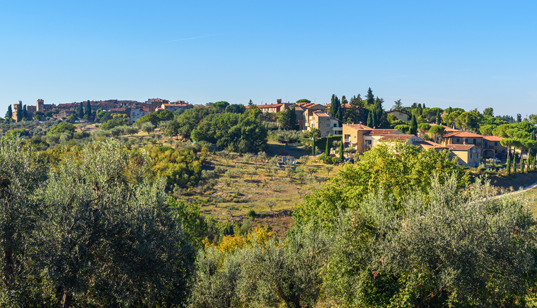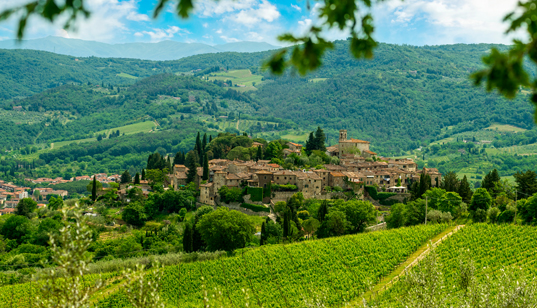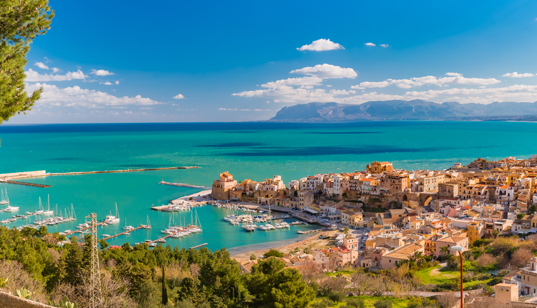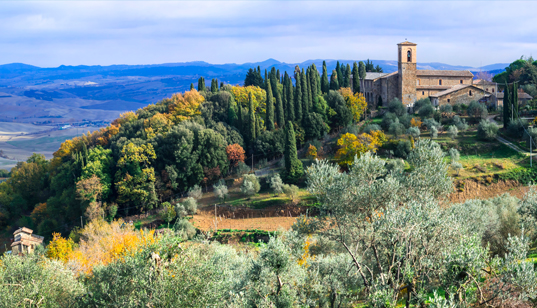Spellbinding Certaldo, from its hilltop in the heart of Val D'Elsa, seemingly enticing visitors away from the area’s other captivating villages: Monteriggioni, San Gimignano and San Miniato, and these are just the most renowned, or other nearby tourism hotspots such as Castelfiorentino, Florence, Empoli and Siena. Certaldo, proud and rich in cultural heritage, was the birthplace of the great Boccaccio, the writer and poet who played a vital role in bringing the Italian language into being, and it's delightful to imagine that it was this village, with its solid, imposing brick-built walls and open views across the hilly landscape, that inspired him all those years ago. Indeed, it’s in Certaldo Alta, the beating heart of the village, where the Museum House of the great 14th- entury writer can be found: here, in addition to antique furniture, there’s a Study Centre and an important library that preserves ancient editions of his book, the Decameron. Partially rebuilt following the Second World War, Boccaccio’s House underwent a second, more recent restoration which re-instated the access to the tower: from here it’s possible to marvel at the surrounding Tuscan countryside and admire nearby San Gimignano dominated by its distinctive towers.
Certaldo Alta, the ancient medieval village centre, is encircled by a surrounding wall with three gates: Porta al Sole, the castle’s main gate, Porta Alberti and Porta del Rivellino.
After walking through them, the visitor is presented with just about the most perfectly preserved small medieval village, with numerous historically and culturally significant buildings and a setting so enchanting it earned Certaldo the Touring Club Italiano's Orange Flag, an important mark of quality awarded to places able to offer visitors a truly unique food and wine, cultural and environmental experience.
A visit to Certaldo is a plunge into the depths of a distant past that takes the visitor to places of great historical importance, such as the Palazzo Pretorio, the Chiesa dei San Jacopo e Filippo (Church of Saints James and Philip), Palazzo Stiozzi Ridolfi, Palazzo Giannozzi and Palazzo Machiavelli. The medieval village of Certaldo can be reached via a funicular railway, which opened in 1999 and offers a splendid panoramic view of the stunning natural, and historically significant, landscape.
Local cuisine, traditional dishes, interesting facts
Much sought after and offering a truly unique taste, la Cipolla di Certaldo (the Certaldo onion), with its distinctive light purple colouring, is a traditional product that’s become synonymous with the area. Its origins are so deeply rooted in the local culinary tradition, that it has featured in the village's coat of arms ever since the Middle Ages. Its succulence and flavour, intense yet slightly sweet, are why it’s the main ingredient of the traditional zuppa di cipolle toscana (Tuscan onion soup).
In a more modern twist, the Cipolla di Certaldo is also used to make a delightful chutney which goes perfectly with cheeses, boiled meats, pork and game. In addition to the onion, the agricultural traditions of Val D'Elsa, together with the unique climate and hilly environment, have given rise to the high quality production of extra virgin olive oil and the world-renowned DOCG Chianti wines. Prized white truffles are also harvested in the area around Certaldo, another local speciality that’s sure to get the senses tingling.
Where to eat enjoing a bottle
di Acqua San Benedetto
Ristorante Pizzeria Medievale "Da Messer Boccaccio", Certaldo (FI)
















